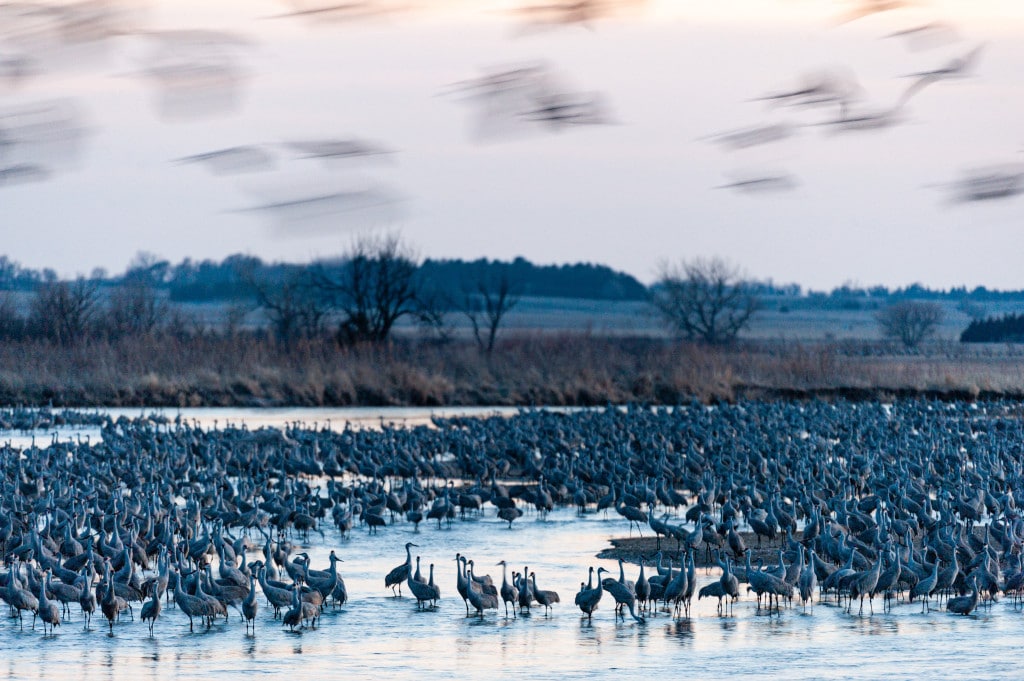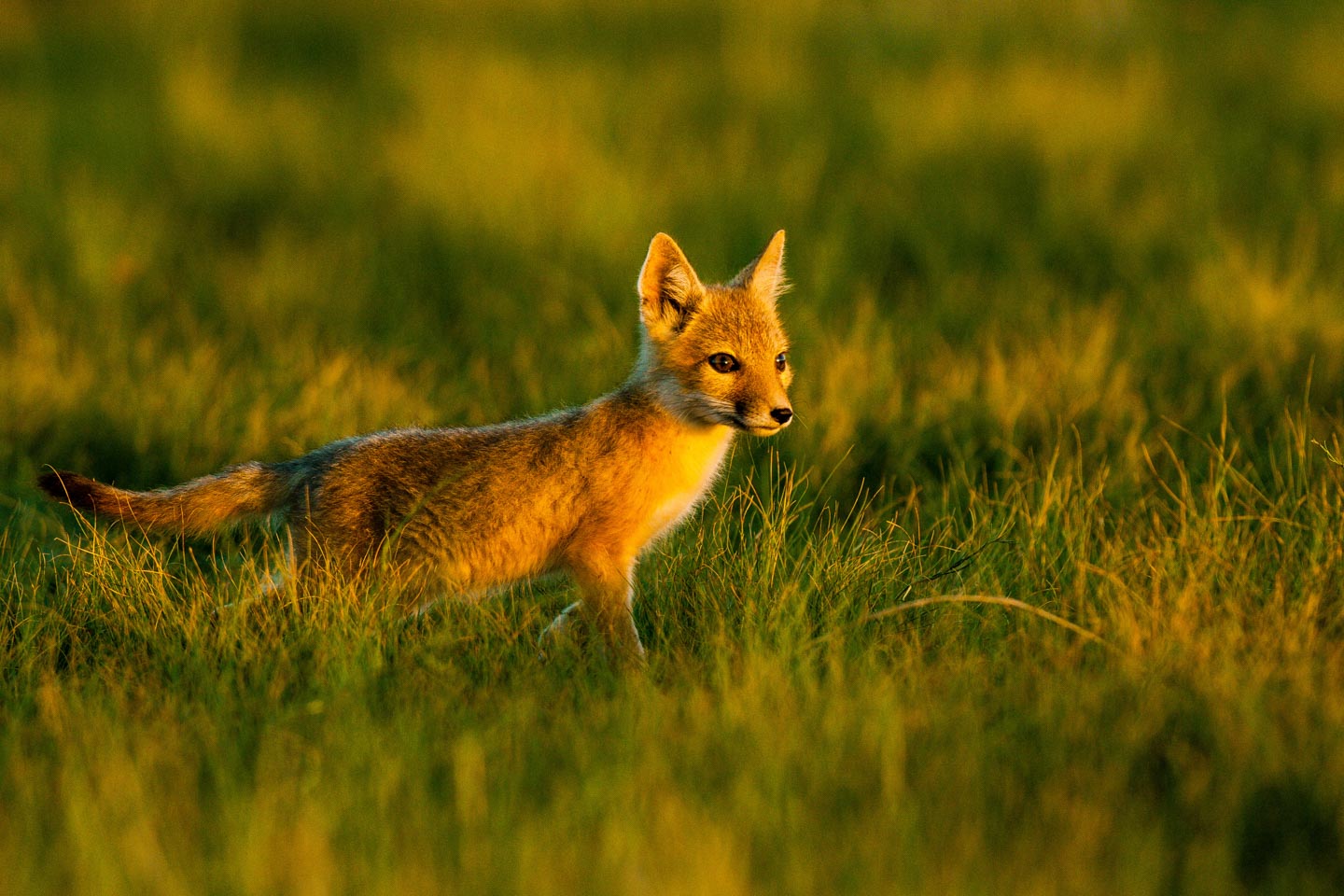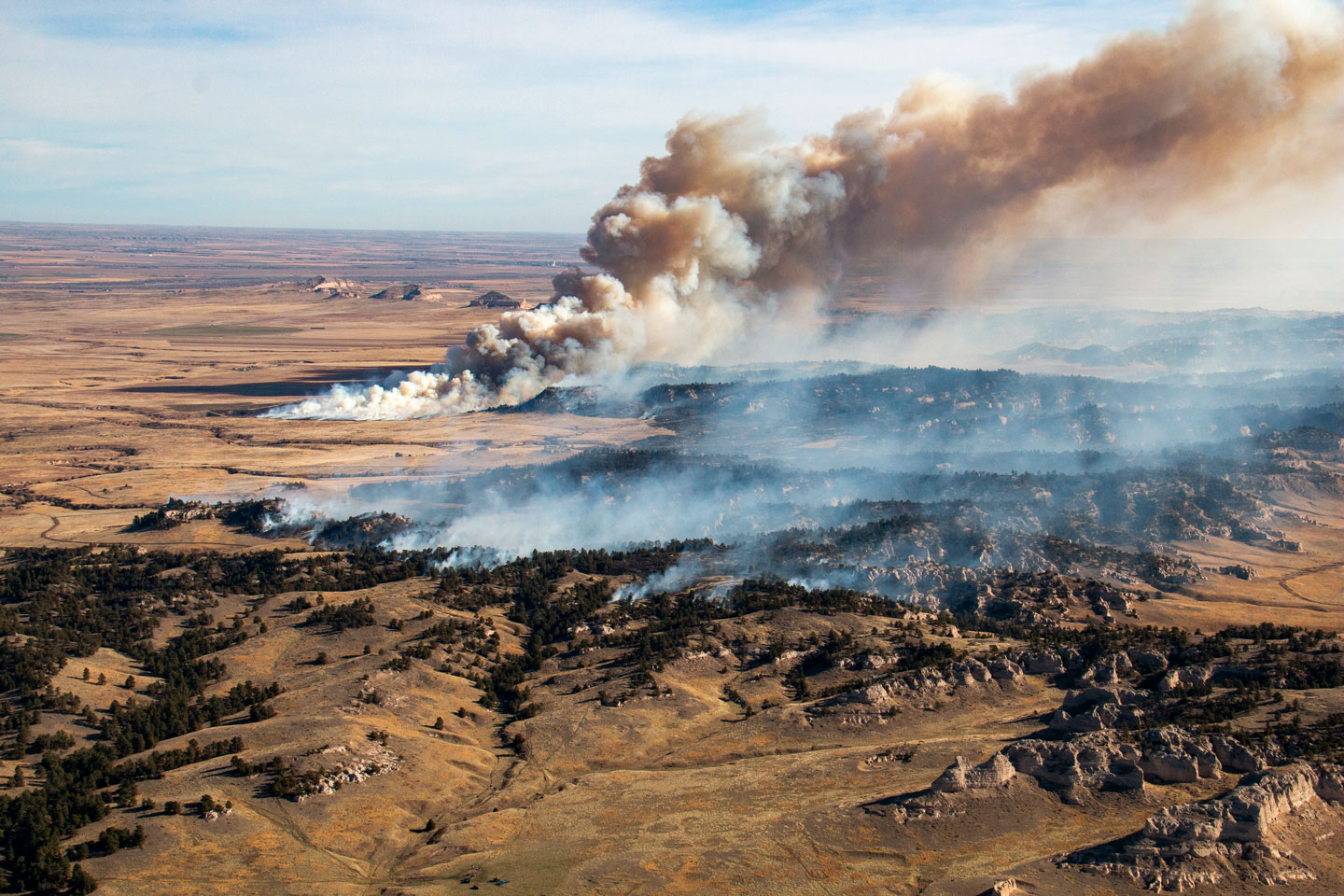Sandhill crane

Every spring Nebraska’s central Platte River valley hosts one the most remarkable wildlife spectacles in North America and the largest gatherings of cranes in the world. From mid-February through early April about a million sandhill cranes stage here, feeding in cornfields and wet meadows by day and roosting in the shallow flowing waters of the Platte River at night.
The central Platte River is important to sandhill cranes and other migratory birds because it serves as a key stopover site where birds rest and store energy to continue their northward migration and subsequently breed. Sandhill cranes that stop in Nebraska continue north, with breeding ranges across the northern United States, Canada, and Siberia. Smaller concentrations of sandhill cranes also stage along the North Platte River in western Nebraska.
Cranes are among the oldest living birds on the planet. Fossil records place sandhill cranes in Nebraska more than nine million years ago, predating the Platte River, which formed about 10,000 years ago. The landscape then was savanna-like, inhabited by rhinos, camels, and elephants now extinct.
Although cranes existed alongside American bison, pronghorn and wapiti on the prairies at one time, humans now dominate the landscape, having replaced the bison with cattle and the prairie with corn and concrete.
There are five subspecies of sandhill cranes; two are migratory and three are non-migratory. Two of the non-migratory subspecies are endangered: the Mississippi sandhill crane and Cuban sandhill crane. The third non-migratory subspecies is the Florida sandhill crane, which is doing well.
Populations of migratory subspecies passing through Nebraska are stable and increasing. Lesser sandhill crane is the smaller subspecies and comprises approximately 80% of birds staging along the Platte River. Greater sandhill crane is larger and comprises approximately the remaining 20% of birds.
Spring stopover in the Platte River valley
Sandhill cranes that stop over in Nebraska primarily winter in Texas, New Mexico and Mexico. They usually arrive in the central Platte River valley in February. Numbers peak about mid to late March. Large numbers remain through the first week of April, but by April 10, a mass exodus often occurs. A few stragglers remain through early May. Arrival and peak numbers are influenced somewhat by weather and climate, with migration occurring earlier by a few days in warm springs and later in those years when winter is slow to loosen its grip.
The greater sandhill crane nests in the Great Lakes, Intermountain West and southern Canada. This is the subspecies that also nests in Nebraska. The lesser sandhill crane is a bird of the high Arctic, nesting across the northern reaches of Canada and Alaska.
At dusk, the cranes gather along the broad, shallow reaches of the Platte to roost for the night. They prefer to stand in water about six inches deep, taking on the configuration of submerged sandbars. Densities of more than 12,000 cranes per half mile of river can occur. During inclement weather they seek out the narrower, more protected stretches of the river. Occasionally, the river freezes, and the birds must roost in the fields adjacent to the river, huddled together for warmth and protection.
At dawn, the cranes leave the river and head to the fields to feed. They usually range within five miles of the river. The cornfields provide cranes with a source of energy, while meadows and alfalfa fields provide essential proteins and minerals. They also serve an important social function as loafing and courtship areas.
The dance of the sandhill crane is well known. Pairs engage in elaborate bowing displays with outstretched wings and leap high into the air. Often, a corncob or stick is picked up and thrown upward repeatedly. This behavior is believed to strengthen or establish new pair bonds. Although cranes generally mate for life, they are hunted in several states and provinces. If a mate is lost, cranes will select another. Consequently, the Platte has been referred to as “the greatest singles bar for cranes” or “the melting pot of crane world” since it provides the best opportunity to find a new mate as sub-populations from throughout the Northern Hemisphere mingle.
Sandhill cranes do not attain sexual maturity until they are three to five years old. They construct a nest mound on the ground out of vegetation. Cranes lay two eggs, although it is rare for both young cranes to survive the 10 weeks to flight stage. The family group remains intact through the following spring, and if you look closely at the flocks in the flocks in the fields, you will easily observe these three-bird families. The young have a distinctive “peep” call, so listen closely and you will hear them. After the cranes leave the Platte, the family ties are severed, and the young are on their own. Sandhill cranes are long-lived; some have been known to live more than 25 years in the wild.
Sandhill cranes were common breeders in Nebraska prior to 1900. During the latter part of the 20th Century, regional populations of sandhill cranes recovered. In 1999, sandhill cranes were confirmed nesting at two sites in the Rainwater Basin. Since 1999, additional nesting records from across the state have been documented. However, sandhill canes remain relatively rare and local as a breeding species.
An individual crane spends about 29 days along the Platte River. During that time, it will acquire up to a pound of fat, which provides the energy necessary to complete the migration and initiate nesting. About 90 percent of their diet consists of corn, while the remaining 10 percent is made up of invertebrates such as earthworms, snails and insect larvae.
It has been estimated that the cranes consume nearly 1,600 tons of corn during their stay. Fortunately, this is waste grain leftover from the fall harvest and, as such, provides a service to the local farmers by removing what would become volunteer corn in the next year’s crop.
Before there was corn, cranes ate starchy tubers from a variety of aquatic plants such as nutsedge, a species once abundant in the widespread wetlands bordering the Platte before European settlement. Now about 75 percent of these wetlands have been converted to croplands.
At midday when the sun is shining, look for soaring “kettles” of cranes over the river valley. These groups appear as wisps of smoke from a distance. The birds are testing the thermals and keeping their flight muscles toned for the journey that lies ahead.
At midday when the sun is shining, look for soaring “kettles” of cranes over the river valley. These groups appear as wisps of smoke from a distance. The birds are testing the thermals and keeping their flight muscles toned for the journey that lies ahead.
Cranes are diurnal or daytime migrants and use thermals to their advantage. They will ride the thermal higher and higher up to an altitude of a couple of thousand feet, then they will glide northward in wavering lines losing altitude as they go until they reach the next thermal, spiraling upwards to repeat the process. This method of migration is energy efficient, more so than the power-flapping flight of other species such as geese.
On a good day, cranes can travel up to 500 miles although 200 to 300 miles is more typical. In the late afternoon, they seek a wetland of some type to roost for the night and depart the next morning weather permitting, until they reach their destination.
Understanding the biology of these birds will add to your enjoyment and appreciation as you watch them in their daily activities and marvel at the magic of their migration.

Crane viewing & resources
Are you looking to plan a trip to witness one of the nation’s greatest wildlife spectacles? Or are you curious about how sandhill cranes sleep? Check out these helpful crane viewing resources and articles from our Nebraska Birding Guide website and Nebraskaland Magazine.



